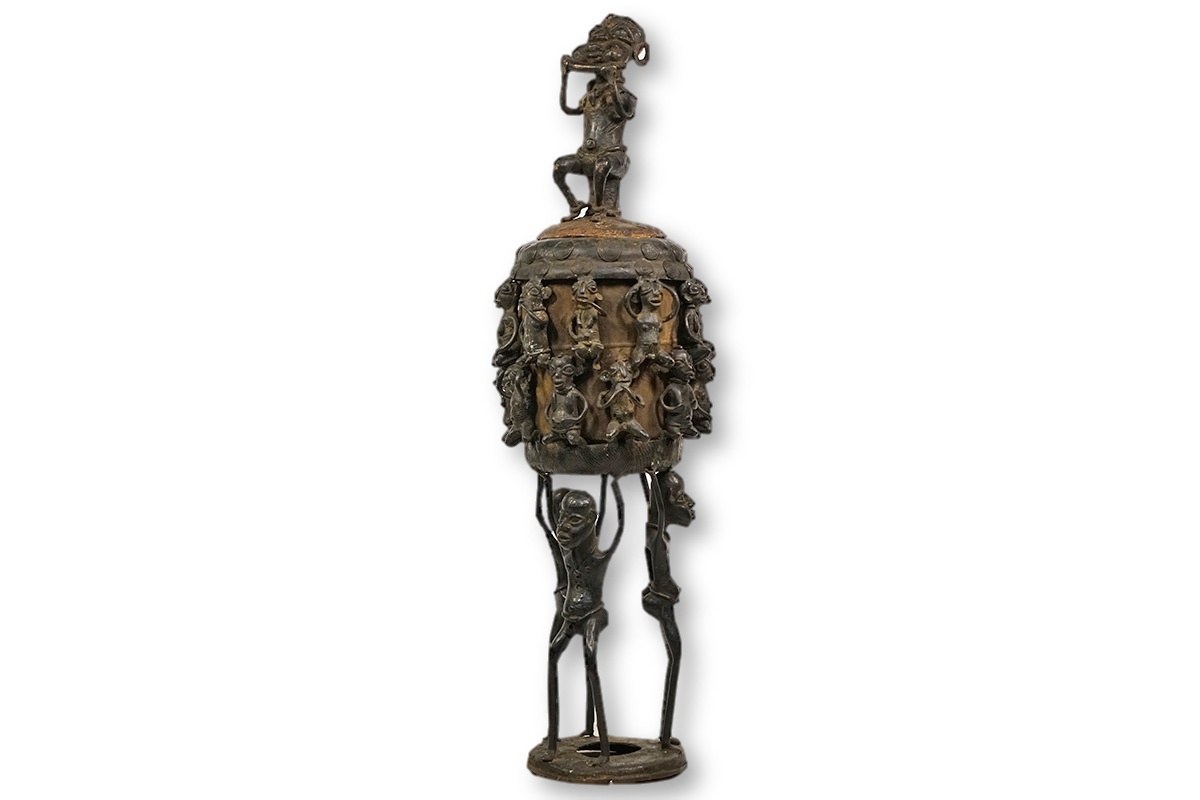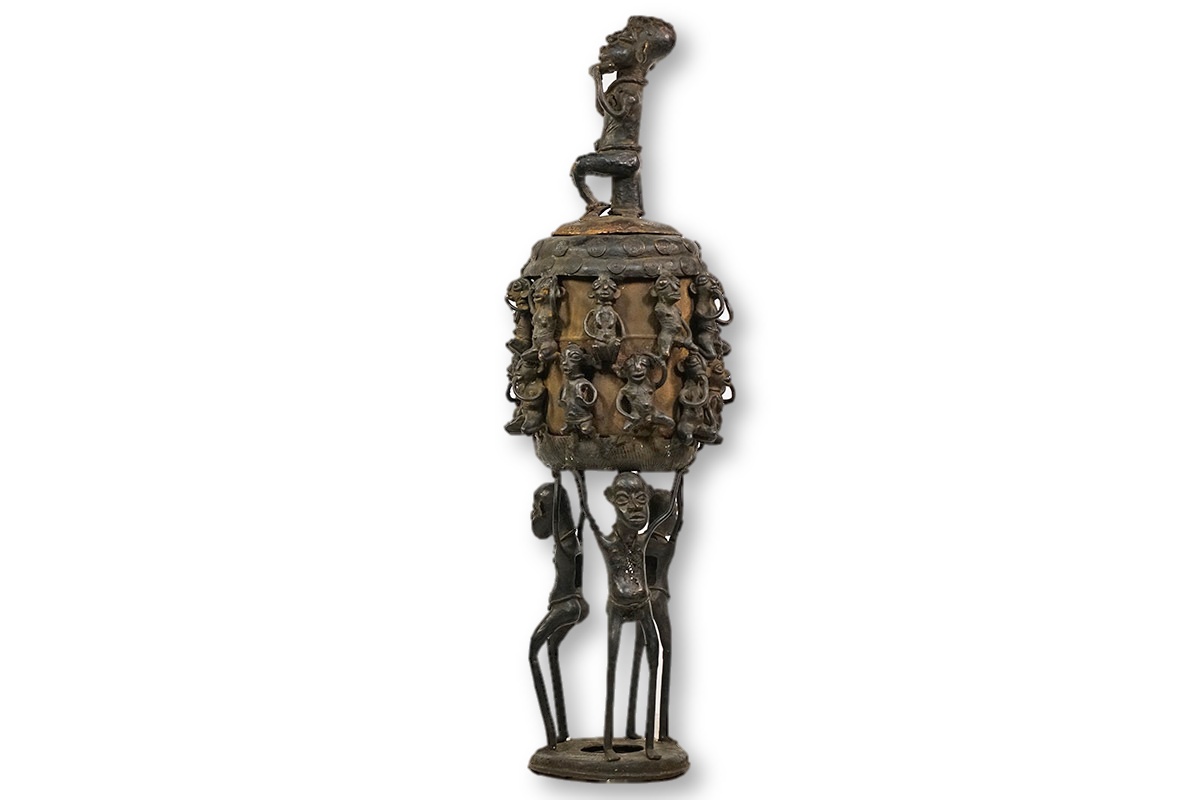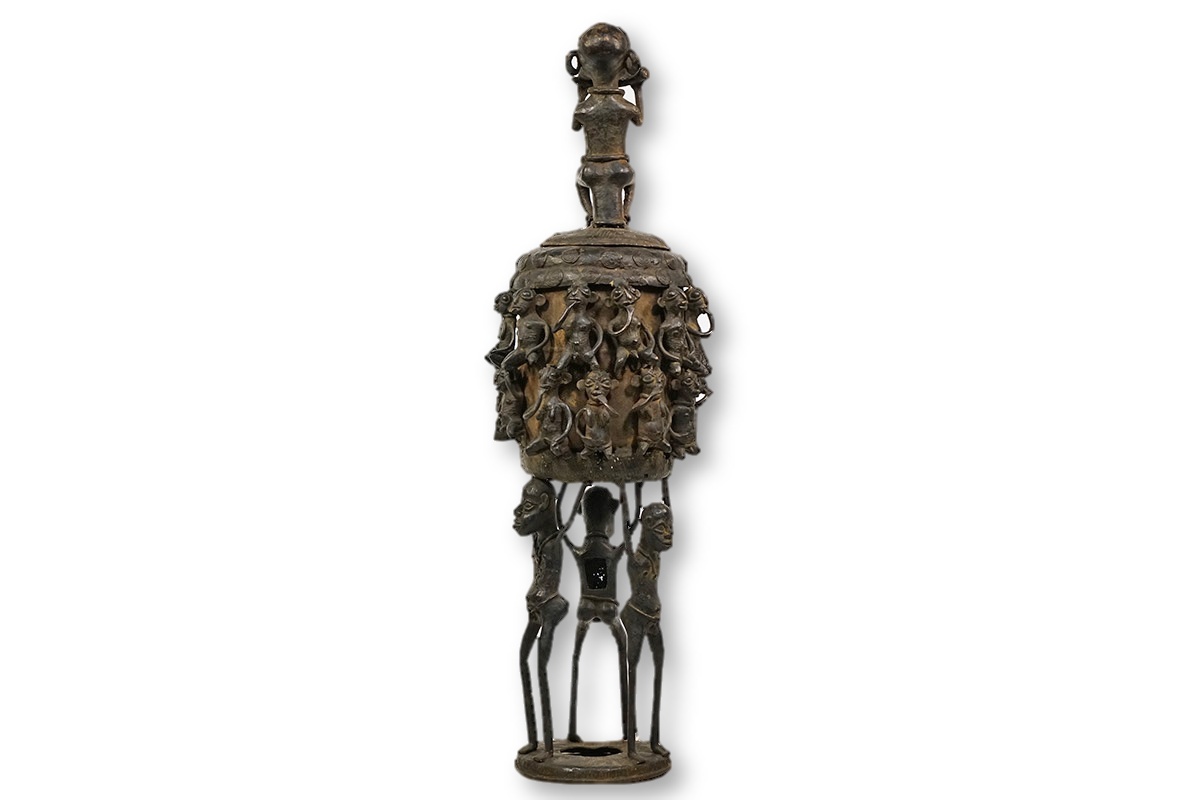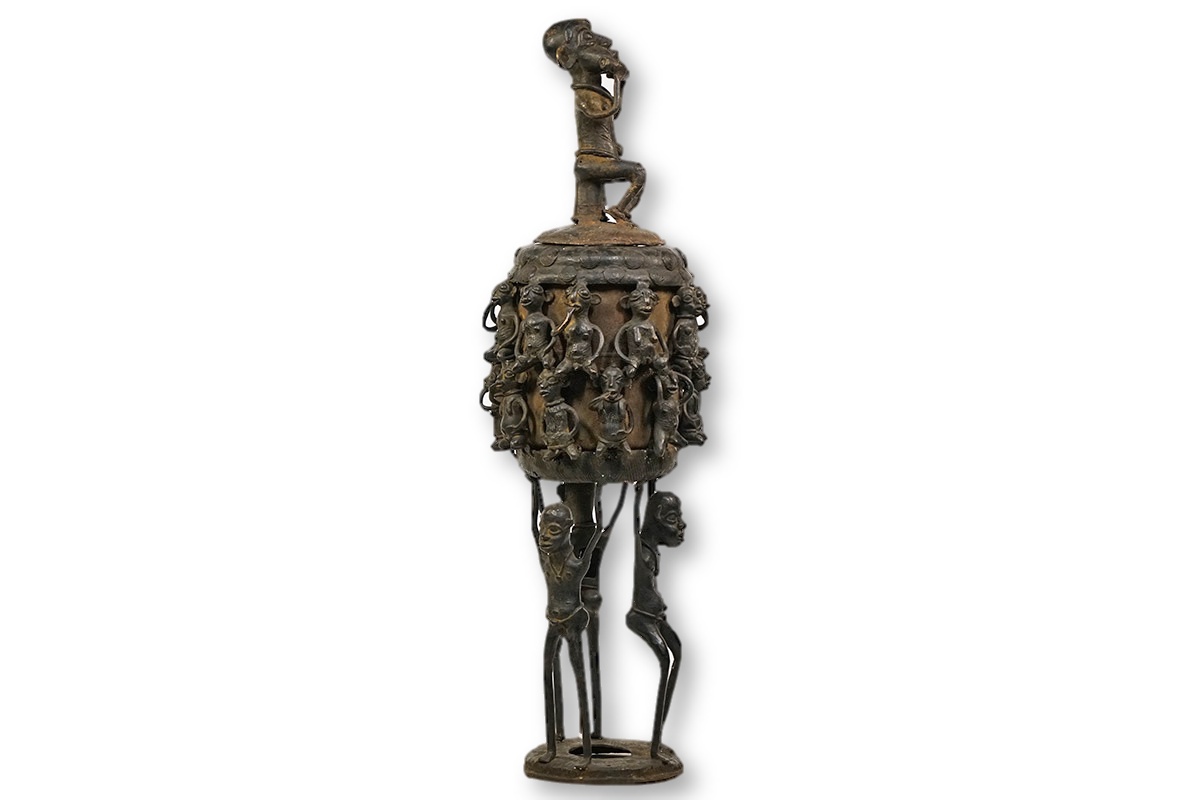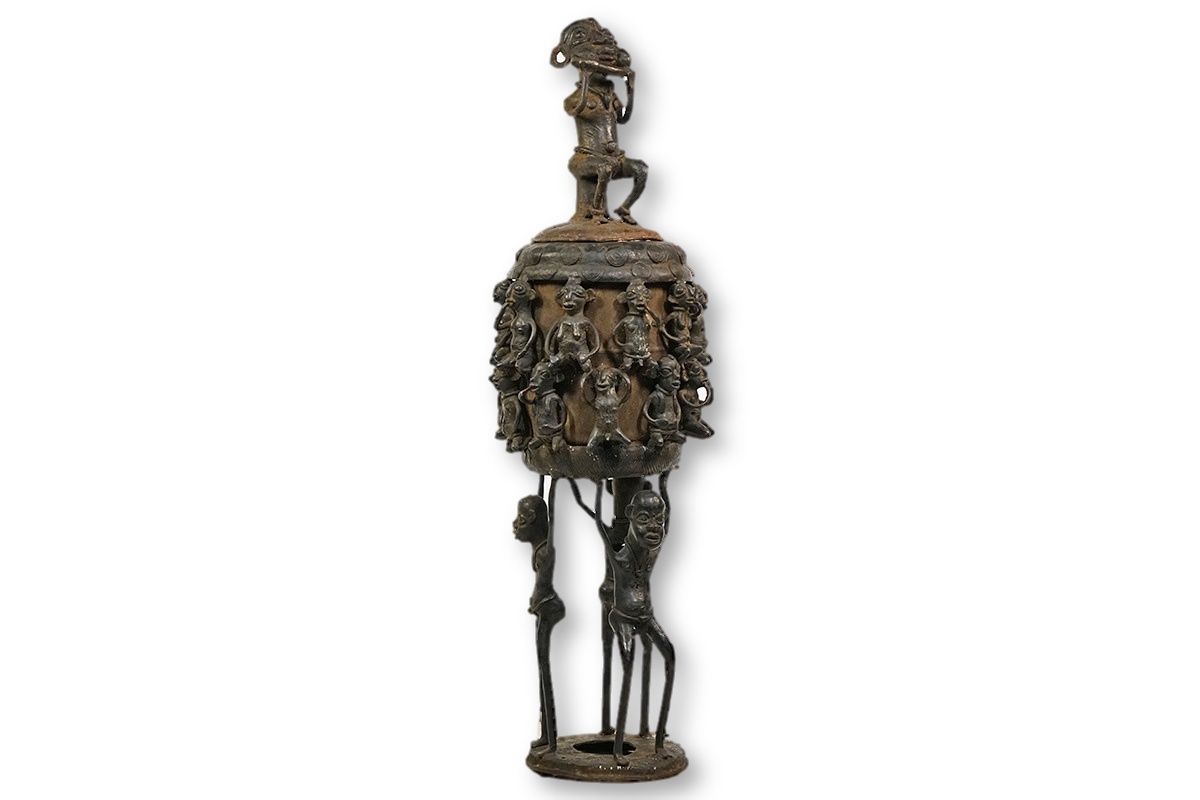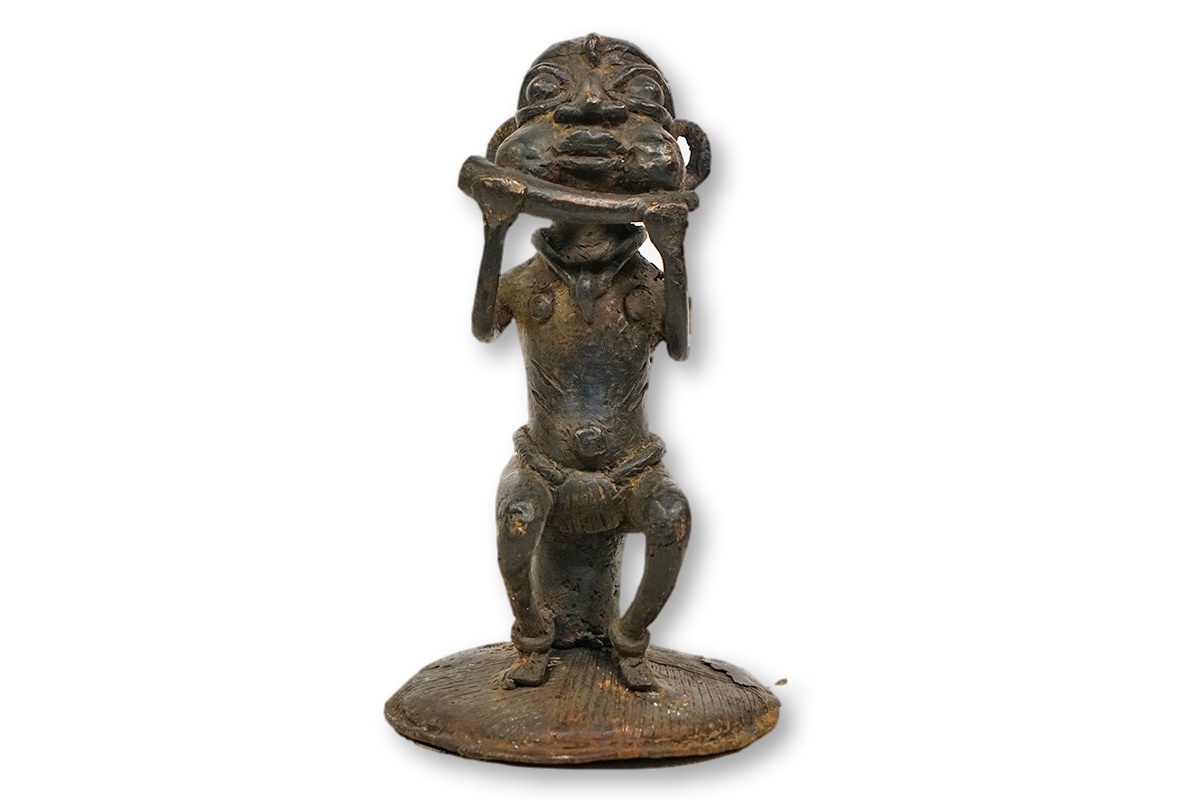This Tikar bronze container is a beautiful piece of artwork. It features 3 men holding up the container at the base, multiple soldiers around the container and a man sitting above. The container is 42 inches tall and weighs 42 pounds.
Intricate Tikar Bronze Container 42″ | Cameroon | African Art
$4,500.00 Original price was: $4,500.00.$2,250.00Current price is: $2,250.00.
Sold

| Type of Object | Bronze Container |
|---|---|
| Country of Origin | Cameroon |
| Ethnicity | Tikar |
| Material | Copper Alloy |
| Approximate Age | Unknown |
| Height | 42" |
| Width | 12" |
| Depth | 12" |
| Weight | 42 lbs |
| Overall Condition | Bronze and metal pieces may have signs of corrosion and wear and tear. See photos or inquire for more information. |
Tribe Information
About the Tikar People
“The grassland region, in south-west Cameroon, is a hilly and mountainous area covered by an equatorial forest in the south and a savannah in the north. Politically, the area is divided into numerous small independent kingdoms and chiefdoms, whose powers are counterbalanced by male and female societies. Since it’s colonization by the Germans in 1884, this entire region” (which includes the) “Tikar territories, has attracted the attention of Western scholars because of its artistic heritage.”
“The Tikar area is occupied by around 250,000 people who speak different languages, but yet claim common ancestors. It is divided into two main geographical sub-groups – the first includes village-dwelling people who live in round huts covered by conical roofs and whose artistic output is largely associated with 19th-century bronze pipes. The second sub-group occupies the north-west highlands and they predominantly carve statues and masks.”
Source:
Baquart, Jean-Baptiste. The Tribal Arts of Africa. New York: Thames and Hudson Inc. 1998. Print.
Additional Information
About Lost-Wax Casting Method
In-direct lost wax casting is the most basic form of metal casting seen in African cultures. Scholars have yet to establish exactly how it was introduced and developed in West African regions, but it is known that it was being used prior to Portuguese explorers’ arrival in the late 1400’s.
To use this method, the artist must begin with a low melting point material that can retain its shape but is soft enough to carve intricate details into, such as beeswax. Once the artist finishes carving the details, layers of clay are applied to the outside and then left to dry. The first layer of clay applied takes on the details, while the additional layers of coarser clay provide strength to the entirety of the mold. Once fired, the wax is then melted, leaving only the baked clay shell. Liquid metal is then poured into the empty clay mold. Once the metal has hardened and cooled, the clay exterior is then broken. This process reveals the finished metal object, which is always unique due to the mold being destroyed during the final process.
Many West African sculptors have altered this method by using multiple castings, which can be used to create hollowed and thin metal figures. One of the ways to achieve the hollowed result is creating the wax sculptures over a formed clay core. Iron spikes are used to attach the solid clay core to the clay layers of the mold. The metal is then poured inside and left to cool and hardened. At the end of the process, the clay core is then broken up and removed and the final brass work is finished. These hollowed pieces can then be united to create larger figures or vessels.
Source:
Apley, Alice. (2001, October) African Lost-Wax Casting Essay. http://www.metmuseum.org/toah/hd/wax/hd_wax.htm

